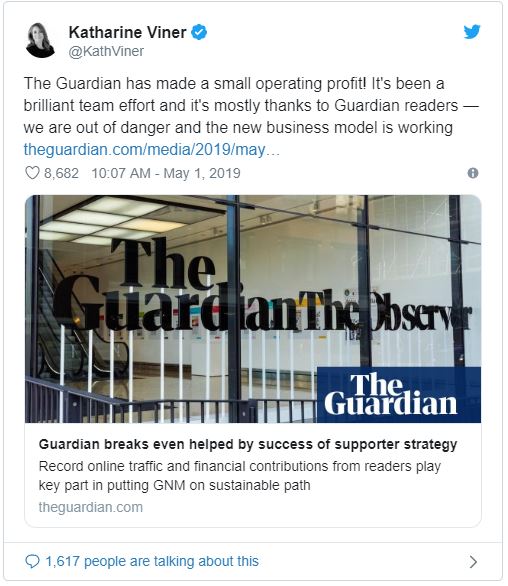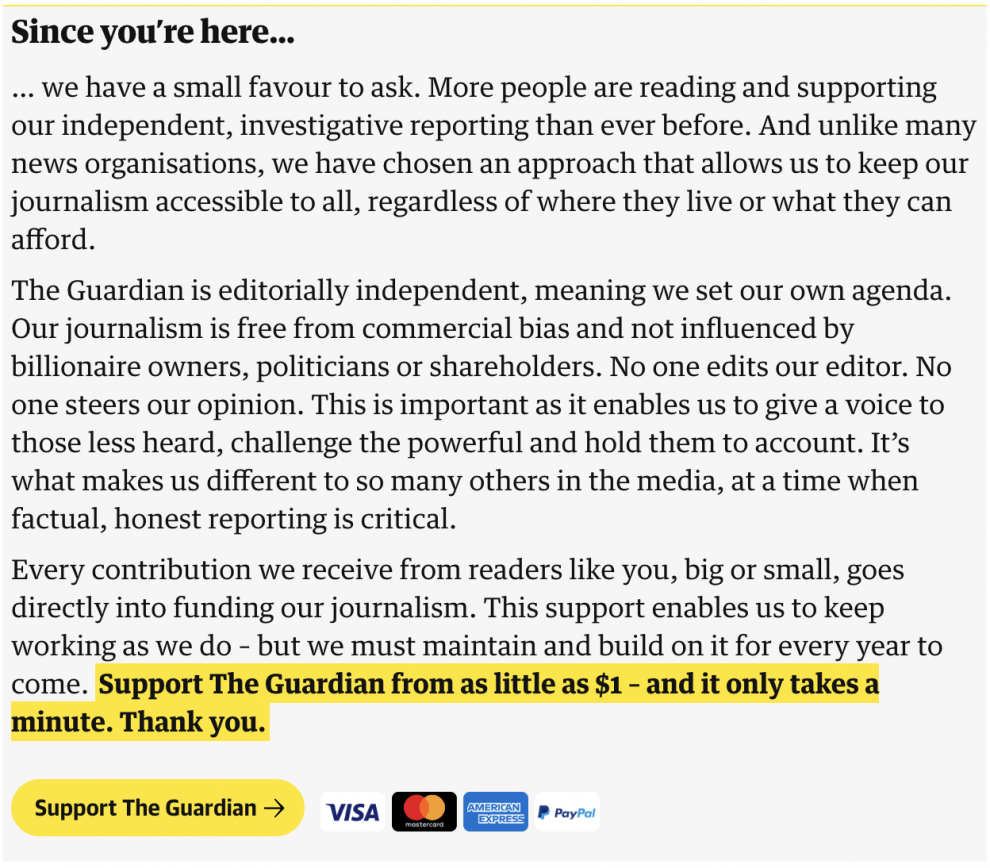The print industry has long come under fire for it’s arguably lacklustre performance when it comes to turning a profit.
The Guardian, a popular British daily newspaper, has traditionally had a similar trajectory, making a total R1.5 billion loss over the last three years.
On Wednesday, 1 May,
The Guardian’s editor-in-chief Katharine Viner tweeted the news that all that had changed.

In
an article for Nieman Labs, Ken Doctor suggests that there are three financial landmarks that newspapers have to reach in order to transition successfully to digital. They are:
- Make a majority of your revenue from digital sources
- Make a majority of revenue from readers rather than advertising
- Achieve the ‘minor miracle’ of net growth
The Guardian has, in fact, achieved all of those markers — only a few years on from a seven-year stretch where they lost a staggering R42 billion!
So, let’s break each of those down a bit:
1. Make the majority of your revenue from digital sources
Why is The Guardian succeeding? Their digital traffic is up by 70% since 2017. Fifty-five percent of their revenue comes from digital sources, which is what
Joshua Benton calls a “real feat of transition”. This is a feat that very few newspapers have managed to achieve — the
Financial Times has, and
The New York Times is close, with only 40% of its revenue coming from digital.
Not only that, but
The Guardian also saw growth in both digital and advertising subscriptions. The most impressive statistic of all? A mere 8% of the newspaper’s revenue comes from print advertising.
Only 8% of The Guardian’s revenue comes from print advertising
“There’s still money in print, but it can’t be [the] guiding light anymore,” says Benton.
2. Make a majority of revenue from readers rather than advertising
Instead of making digital dollars by selling advertising space,
The Guardian (along with other digital successes like
The Washington Post,
The Wall Street Journal and
The Times of London) has built its money-making strategy around selling subscriptions, aka
paywalls.
By offering valuable content that readers can’t find elsewhere, they have found success with their paywall where readers must pay in order to read their content online.
Can’t quite remember how paywalls work? Brush up your knowledge by reading our article, Paywalls 101: What you need to know
While many publications have used this paywall strategy to make their money online,
The Guardian went a different route —
a membership strategy.
Wait, what?!The Guardian created a free-to-use app but with one minor caveat — the Premium version (available for R100 per month) has no adverts, better offline reading, daily crosswords and some other minor features. On top of that, they also ask readers for money ... often.
 Seen regularly at the bottom of The Guardian’s online articles
Seen regularly at the bottom of The Guardian’s online articles
If you do decide to donate — the default option is a repeating monthly contribution, but you can switch it to a once-off gift.
“The one-off contributions are a nice twist on reader revenue that most other newspapers can’t offer,” says Benton. “Think about it: If you just think
The Washington Post is swell and you want to support their work, how can you just give it $50 other than buying a subscription?”
3. Achieve the ‘minor miracle’ of net growth
While it may sound like a simple goal for a company, actually making more money than you did before is a near-impossible feat for newspapers. Instead of growing the business to make more money, most newspapers are cutting back on costs simply to stay afloat.
However, annual revenue is on the up at
The Guardian! While they
did cut costs by 20% over the last three years, they are now seeing a 3% growth in revenue.
Benton says, “3% increase in revenue is an
extremely welcome sign that growth may be the path forward, not just endless layoffs and buyouts.”
What do you think the future of newspapers will look like? What strategies will they have to embrace to stay afloat? Let us hear your thoughts in the comments section below.
*Image courtesy of Vecteezy